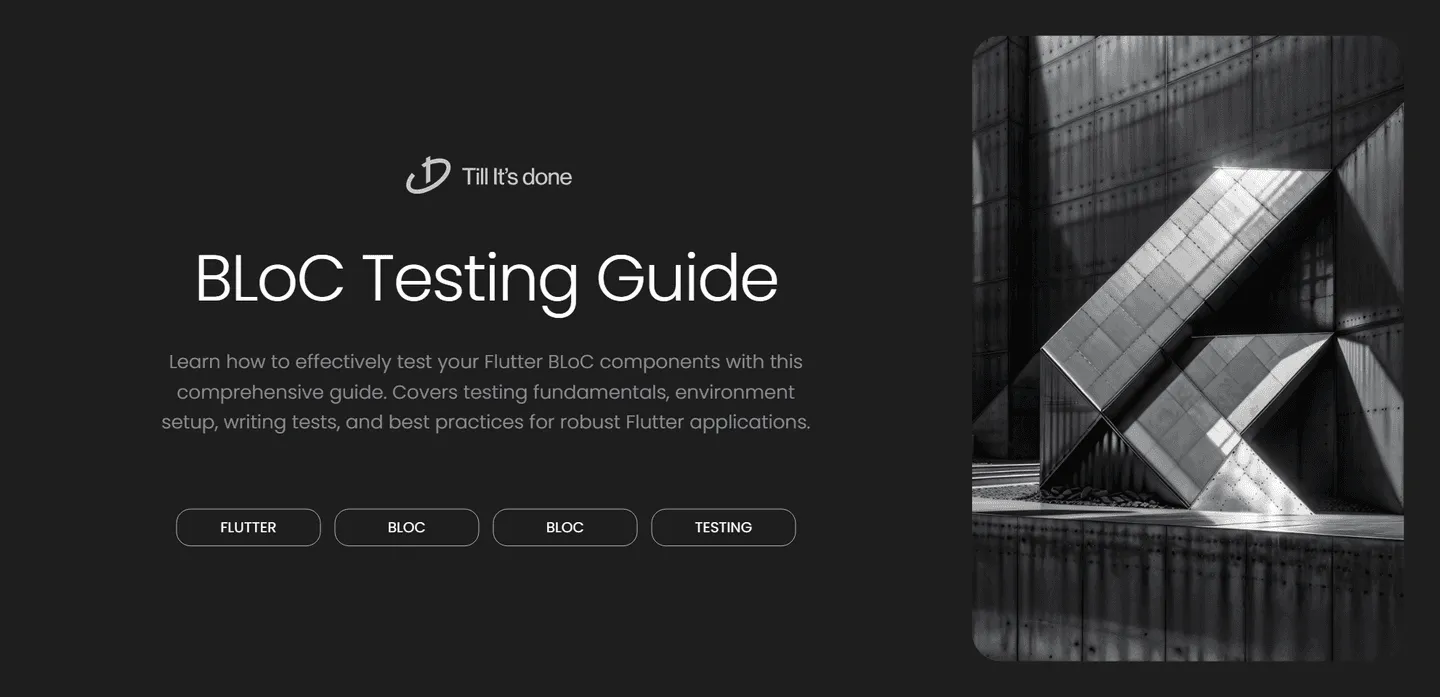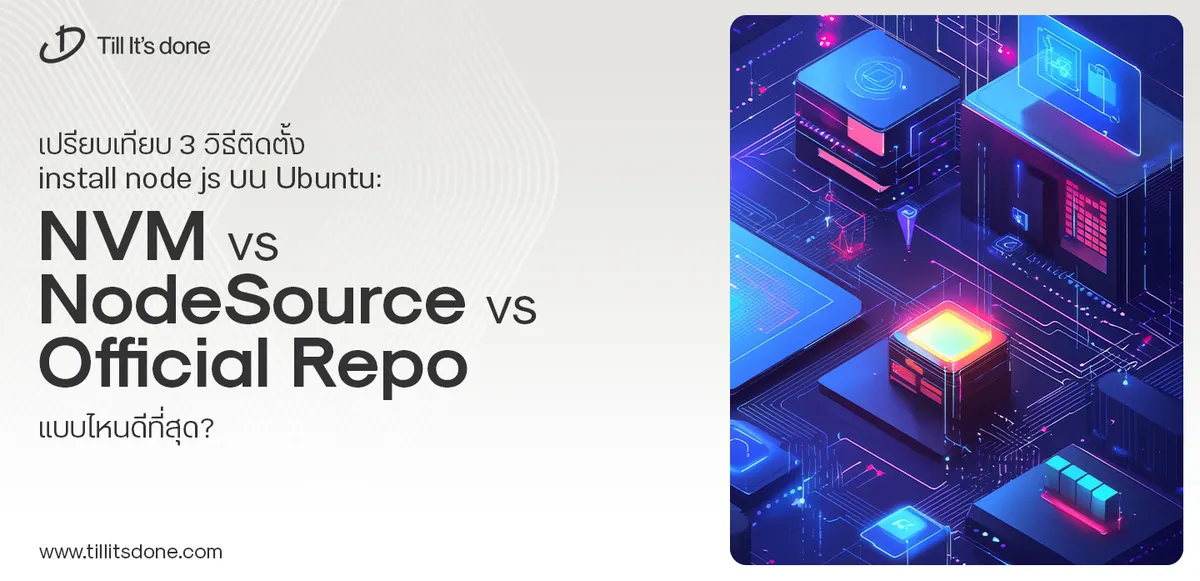- Services
- Case Studies
- Technologies
- NextJs development
- Flutter development
- NodeJs development
- ReactJs development
- About
- Contact
- Tools
- Blogs
- FAQ
Testing BLoC in Flutter: A Step-by-Step Guide
Covers testing fundamentals, environment setup, writing tests, and best practices for robust Flutter applications.


Testing BLoC in Flutter: A Step-by-Step Guide
Testing is a crucial aspect of developing robust Flutter applications, especially when working with state management solutions like BLoC (Business Logic Component). In this comprehensive guide, we’ll explore how to effectively test your BLoC components to ensure your app’s reliability and maintainability.
Understanding BLoC Testing Fundamentals
Before diving into the technical details, it’s essential to understand what we’re actually testing in a BLoC. A BLoC component typically consists of three main elements: events, states, and the business logic that transforms events into states.

Setting Up Your Testing Environment
First, let’s set up our testing environment by adding the necessary dependencies to our pubspec.yaml file:
dev_dependencies: bloc_test: ^9.1.0 test: ^1.24.0 mockito: ^5.4.0Writing Your First BLoC Test
Let’s start with a simple counter BLoC test. We’ll test a basic increment functionality:
void main() { group('CounterBloc', () { late CounterBloc counterBloc;
setUp(() { counterBloc = CounterBloc(); });
tearDown(() { counterBloc.close(); });
test('initial state should be 0', () { expect(counterBloc.state, equals(0)); });
blocTest<CounterBloc, int>( 'emits [1] when Increment is added', build: () => CounterBloc(), act: (bloc) => bloc.add(Increment()), expect: () => [1], ); });}
Testing Complex BLoC Scenarios
When testing more complex scenarios, we need to consider:
- Multiple state changes
- Error handling
- Dependencies and external services
- Asynchronous operations
Here’s an example testing a BLoC with asynchronous behavior:
blocTest<UserBloc, UserState>( 'emits [loading, success] when fetching user data succeeds', build: () { when(mockUserRepository.getUser()) .thenAnswer((_) async => User('John Doe')); return UserBloc(userRepository: mockUserRepository); }, act: (bloc) => bloc.add(FetchUser()), expect: () => [ UserLoading(), UserSuccess(User('John Doe')), ],);Best Practices for BLoC Testing
- Test one behavior at a time
- Use meaningful test descriptions
- Mock external dependencies
- Test error scenarios
- Verify state transitions
- Keep tests maintainable
Common Pitfalls to Avoid
- Don’t test implementation details
- Avoid testing trivial code
- Don’t forget to test error cases
- Don’t skip testing edge cases

Conclusion
Testing your BLoC components is crucial for maintaining a reliable Flutter application. By following these guidelines and best practices, you can create a robust test suite that helps catch bugs early and makes your codebase more maintainable.
Remember to run your tests frequently and integrate them into your CI/CD pipeline. Happy testing!
 สร้างเว็บไซต์ 1 เว็บ ต้องใช้งบเท่าไหร่? เจาะลึกทุกองค์ประกอบ website development cost อยากสร้างเว็บไซต์แต่ไม่มั่นใจในเรื่องของงบประมาณ อ่านสรุปเจาะลึกตั้งแต่ดีไซน์, ฟังก์ชัน และการดูแล พร้อมตัวอย่างงบจริงจาก Till it’s done ที่แผนชัด งบไม่บานปลายแน่นอน
สร้างเว็บไซต์ 1 เว็บ ต้องใช้งบเท่าไหร่? เจาะลึกทุกองค์ประกอบ website development cost อยากสร้างเว็บไซต์แต่ไม่มั่นใจในเรื่องของงบประมาณ อ่านสรุปเจาะลึกตั้งแต่ดีไซน์, ฟังก์ชัน และการดูแล พร้อมตัวอย่างงบจริงจาก Till it’s done ที่แผนชัด งบไม่บานปลายแน่นอน  Next.js สอน 14 ขั้นตอนเบื้องต้น: สร้างโปรเจกต์แรกใน 30 นาที เริ่มต้นกับ Next.js ใน 14 ขั้นตอนเพียงแค่ 30 นาที พร้อม SSR/SSG และ API Routes ด้วยตัวอย่างโค้ดง่าย ๆ อ่านต่อเพื่อสร้างโปรเจ็กต์แรกได้ทันทีที่นี่
Next.js สอน 14 ขั้นตอนเบื้องต้น: สร้างโปรเจกต์แรกใน 30 นาที เริ่มต้นกับ Next.js ใน 14 ขั้นตอนเพียงแค่ 30 นาที พร้อม SSR/SSG และ API Routes ด้วยตัวอย่างโค้ดง่าย ๆ อ่านต่อเพื่อสร้างโปรเจ็กต์แรกได้ทันทีที่นี่  วิธีสมัคร Apple Developer Account เพื่อนำแอปขึ้น App Store ทีละขั้นตอน อยากปล่อยแอปบน App Store ระดับโลก มาอ่านคู่มือสมัคร Apple Developer Account พร้อมเคล็ดลับ TestFlight และวิธีอัปโหลดที่ง่ายในบทความเดียวนี้ได้เลย
วิธีสมัคร Apple Developer Account เพื่อนำแอปขึ้น App Store ทีละขั้นตอน อยากปล่อยแอปบน App Store ระดับโลก มาอ่านคู่มือสมัคร Apple Developer Account พร้อมเคล็ดลับ TestFlight และวิธีอัปโหลดที่ง่ายในบทความเดียวนี้ได้เลย  TypeScript Interface คืออะไร? อธิบายพร้อมวิธีใช้และข้อแตกต่างจาก Type เรียนรู้วิธีใช้ TypeScript Interface เพื่อสร้างโครงสร้างข้อมูลที่ปลอดภัยและเข้าใจง่าย พร้อมเปรียบเทียบข้อดีข้อแตกต่างกับ Type ที่คุณต้องรู้ ถูกรวมเอาไว้ในบทความนี้แล้ว
TypeScript Interface คืออะไร? อธิบายพร้อมวิธีใช้และข้อแตกต่างจาก Type เรียนรู้วิธีใช้ TypeScript Interface เพื่อสร้างโครงสร้างข้อมูลที่ปลอดภัยและเข้าใจง่าย พร้อมเปรียบเทียบข้อดีข้อแตกต่างกับ Type ที่คุณต้องรู้ ถูกรวมเอาไว้ในบทความนี้แล้ว  Material-UI (MUI) คืออะไร อยากสร้าง UI สวยงามและเป็นมืออาชีพในเวลาอันรวดเร็วใช่ไหม มาทำความรู้จักกับ Material-UI (MUI) ที่ช่วยให้คุณพัฒนาแอปพลิเคชันบน React ได้ง่ายและดูดีในทุกอุปกรณ์
Material-UI (MUI) คืออะไร อยากสร้าง UI สวยงามและเป็นมืออาชีพในเวลาอันรวดเร็วใช่ไหม มาทำความรู้จักกับ Material-UI (MUI) ที่ช่วยให้คุณพัฒนาแอปพลิเคชันบน React ได้ง่ายและดูดีในทุกอุปกรณ์  เปรียบเทียบ 3 วิธีติดตั้ง install node js บน Ubuntu: NVM vs NodeSource vs Official Repo แบบไหนดีที่สุด? เรียนรู้วิธีติดตั้ง Node.js บน Ubuntu ด้วย NVM, NodeSource หรือ Official Repo เลือกวิธีที่เหมาะกับความต้องการของคุณ พร้อมเปรียบเทียบ เพื่อการพัฒนาที่มีประสิทธิภาพ!
เปรียบเทียบ 3 วิธีติดตั้ง install node js บน Ubuntu: NVM vs NodeSource vs Official Repo แบบไหนดีที่สุด? เรียนรู้วิธีติดตั้ง Node.js บน Ubuntu ด้วย NVM, NodeSource หรือ Official Repo เลือกวิธีที่เหมาะกับความต้องการของคุณ พร้อมเปรียบเทียบ เพื่อการพัฒนาที่มีประสิทธิภาพ! พูดคุยกับซีอีโอ
We'll be right here with you every step of the way.
We'll be here, prepared to commence this promising collaboration.
Whether you're curious about features, warranties, or shopping policies, we provide comprehensive answers to assist you.


